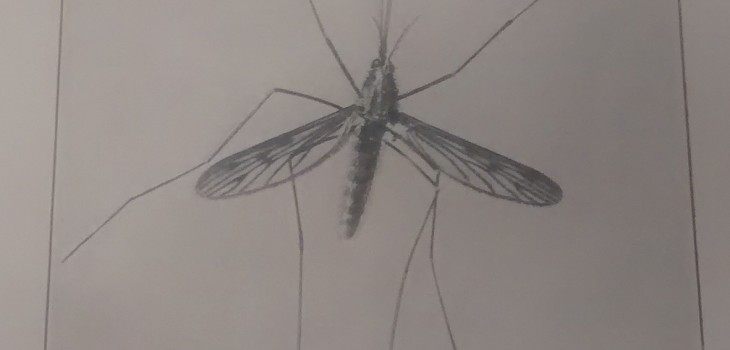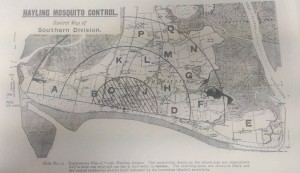To mark World Malaria Day, here is a short blog about the history of malaria in the UK and the work of John Frederick Marshall (1874-1949), parasitologist, whom devoted much of his life in studying and controlling mosquitoes in the UK and whose archives are stored here.
From the 15th century, malaria was endemic along the coasts and marshlands of South-East England, Fenlands and Northern England. The malaria known as ague or tertian fever was a regular occurrence and from the 17th century, onwards cinchona bark (containing the natural antimalarial, quinine) was imported into Britain to treat the disease. The mosquito vector was Anopheles atroparvus caused by the protozoan Plasmodium vivax, occurring in these islands. Incidence rates of malaria gradually declined in Britain from the early 19th century onwards possibly due to improvements in drainage and increasing livestock densities, which made a human blood not the only thing on the menu.
However, despite the decline in malaria in the UK- the mosquito vector was still very much present. John Frederick Marshall (1874-1949), speaking at a local Gosport Rotary Club meeting in 1923, stated:
“I expect that you all have read about the discovery made by Sir Ronald Ross, in the year 1897 that the disease of malaria was conveyed from one person to another by the bites of a certain class of mosquitoes, called the Anopheles mosquitoes. In Great Britain, we have 26 different kinds of mosquitoes, and three of these are of the Anopheles, or malaria carrying variety.”
Marshall was one of the leading authorities on mosquitoes in the UK at the time having decided to devote his life to their study (and eradication). The reason behind this is delightfully eccentric: Having built a home on Hayling Island, situated in Havant, he soon become aware of the notorious local mosquito problem and decreed ‘either the mosquitoes go or I go, and I refuse to be driven out of my own house*’. He decided he needed to eradicate the problem and so formed in 1920 a local anti-mosquito campaign to control the mosquito population. The campaign was such a success; Marshall received funding for a permanent Institute to be built in the premises of his home for the study and control of British mosquitoes. In 1925, the British Mosquito Control Institute was established, specializing in mosquito control research and the only institution that provided a practical example of an existing mosquito control operation in the UK. The Institute was well known in it’s day producing a number of publications on mosquitoes and was visited by a number of distinguished guests in its day including Sir Ronald Ross.
Today, locally transmitted malaria has died out with none of the thirty-three recorded species of mosquitoes known to carry malaria . Mosquito populations are still monitored in this country by the Health Protection Agency (HPA) and the Chartered Institute of Environmental Health mainly to understand the relationship of mosquitoes biting humans but also to act as an early warning system in case any mosquito-borne viruses do migrate to the UK.
* Blog was corrected on 16 May 2014: Originally it stated John Marshall was playing tennis outdoors when he realised the Hayling Island mosquito problem however he only played real or court tennis. To read more about John Frederick Marshall there is a short biographical essay by Keith E Snow and Susan E Snow, ‘”John Frederick Marshall” and “The British Mosquitoes”‘ in the European Mosquito Bulletin, 2004.






